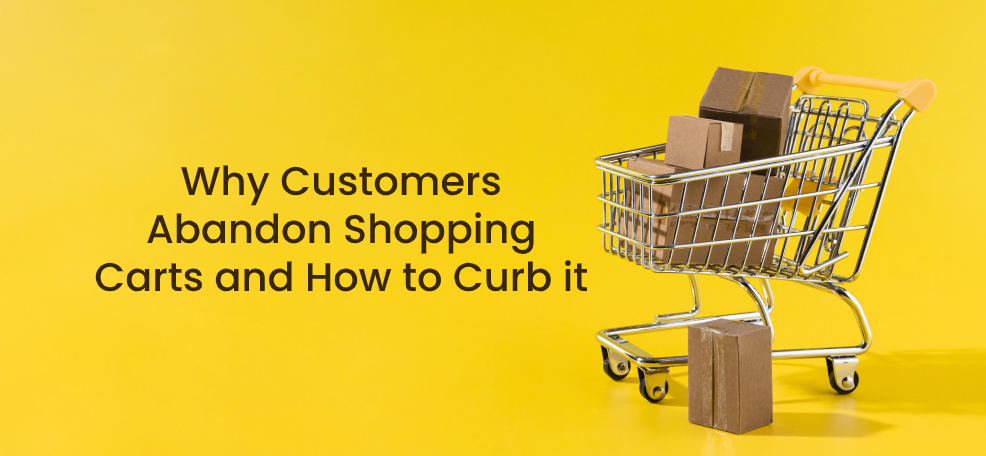Facebook introduced the ‘Like’ button in 2009. It was envisioned to be a harbinger of online positivity and goodwill. However, we all know what it turned out to be.
The ‘Like’ button can be touted to be one of the biggest tools of cyberbullying, spreader carrier of fake news, and sadly, also the cause of low self-esteem among young users.
In the past, and in the present, a host of technologies have been created with the hope that they will make the world, virtual or real — a better place to live. eCommerce is one of them.
If we tell our grandparents that it is possible to get groceries home delivered without having to step out of the home, they will scoff at the idea. But, for the millennial generation and Gen Z, online shopping — be it for groceries or fashion clothing is a natural habit. It is so convenient and easy that it has become a natural habit in our lifestyle.
Now here comes the sad news. Just like the ‘Like’ button turning boon into bane, for eCommerce the convenience it provides itself has become a bane.
It is so easy to add a product to the shopping cart and decide not to buy it. In eCommerce parlance, this is referred to as shopping cart abandonment.
Shopping cart abandonment is when a potential customer starts a check out process for an online order but drops out of the process before completing the purchase at the checkout page.
But, why is the cart abandonment rate such a big deal? 88.05% of online orders made in March 2020 were abandoned. And this is not a case that is restricted to March month alone. It depicts the average cart abandonment across industries where the lowest is in the range of 68%.

For retailers who are already strained under wafer-thin margins and operational challenges, cart abandonment is a challenge that needs immediate resolution. And you don’t want your eCommerce marketing efforts to be for nothing.
The solution begins with understanding the various factors that lead to cart abandonment and how they can be tackled. Let’s get into that discussion.
Reasons for shopping cart abandonment
Across the world, from Asia to America, customer preferences and spending patterns differ at great lengths. However, the reasons that cause cart abandonment in online shopping has a uniform pattern to it.
The most common ones and how to tackle them are discussed below:
1. Window shopping
Online window shopping gives the same hedonic shopping experience akin to real-life window shopping at a mall or retail store. In fact, it is more convenient and inexpensive.
Also, online stores walk the extra mile to showcase their products in 360-degree angles, video thumbnails, and even enrich them with AR-based trial on’s. This makes it easy for the casual browser to check out a product, add it to the cart, and close the browser without completing the purchase.
What’s the problem?
Most customers are window shopping and leave the cart abruptly. They look but don’t buy. The item remains in the cart for a long time until they remember they have to complete the purchase.
Is window shopping bad for business? Not at all. Studies have found that 77% of casual browsers or window shoppers will actually make impulsive purchases while browsing on mobile. However, it takes a nudge to turn these abandoned carts into completed orders.
How to solve it?
Strategically timed exit-intent pop-ups can help with that. For example, a user who is intended to close the window might move the mouse arrow towards the ‘Close’ button. Or a user who has spent significant time on the page but has not interacted with it in any way can be shown a pop up to trigger an action.
These pop-ups could carry messages of discounts, bundle offers, loyalty rewards, etc. that can nudge the window shopper into an impulsive buyer.
The purpose of an exit-intent popup is to get the user’s attention at an opportune moment when they are planning to leave the web page. There are several options in the market like Poptin’s exit-intent popups that make it easy for retailers to set up pop-ups.
2. Hidden Costs
After convenience, the biggest draw of online shopping is the discounts and offers. Imagine the cost savings that a customer had anticipated to evaporate into thin air at the checkout page?
Well, this happens when hidden costs or rather unannounced costs are displayed at the checkout stage. These costs could be for shipping, packing, or scheduled delivery. Some retailers even label it as a ‘processing fee’ for their services.
Studies have proven that 28% of customers will abandon their shopping carts due to unexpected shipping costs.

What’s the problem?
No matter what, these hidden costs give an unpleasant surprise to shoppers. Bumping up the order cost at the last minute with shipping costs, processing fees, etc. can irritate the customer forcing them to abandon the shopping cart.
If it was an impulsive purchase, chances are that these costs could actually turn away the customer from completing the purchase.
How to solve it?
This is not a serious challenge and can be easily tackled by the retailer with some proactive planning on their side. For instance, if there are shipping costs or other costs that will be added to the order other than the displayed price, be transparent about it.
Showcase it on the product page itself. It will help the customer make an informed decision. It will also spare them the trouble to proceed until the checkout page and then finally abandon it.
For example, on the product page itself, customers can be given the option to choose the shipping mode and the costs associated with it. This makes it apparent that shipping is chargeable thus eliminating a surprise at a later stage.

3. Complicated checkout
Winning a customer until the checkout page is half the battle for any online store. Unfortunately, most often, that battle is lost without further progress in the checkout stage? Why so?
What’s the problem?
Convoluted checkout processes give the customer enough interval to rethink their buying decision. For an impulsive shopper, this second thought is enough to abandon the shopping cart. Lengthy checkout processes that ask for too much personal information, and demands the customer to perform more actions to complete the order. This could also make them postpone the purchase or abandon it altogether.
How to solve it?
The checkout process should be kept as simple as possible. It should be hassle-free, should not request private information or force the customer to repeat what they have already provided. In fact, to reduce shopping cart abandonment at the checkout stage, it is recommended to take inspiration from Amazon’s one-click ordering process. The process (which is based on a patented technology) auto-fills all user information, payment information, and also order details enabling the customer to complete the order in a click, or with minimal gestures.

4. Security concerns
Despite the rise in eCommerce transactions, a large chunk of customers is still wary of their cybersecurity. Customer segments belonging to the baby boomers and millennials still want an additional level of assurance that their personal and financial information will not be leaked or accessed by unauthorized personnel. If they do not get the safety assurance, they will abandon the shopping cart abruptly.
What is the problem?
Cybersecurity threats are on the rise. Customers are wary of sharing credit card details or personal details online. The risk is higher when customers have to use digital wallets, in-app purchases, and similar new-age payment modes, the security features of which are not widely known.
How to solve it?
Just like the advent of cybersecurity threats, there has been a rise in community-driven rating and social proof display models. They take the form of security seals, safety guarantees, etc. which the customer can recognize and take comfort in with instant verification.
SSL certificates that give the website an HTTPS suffix and also a padlock symbol is a classic example of such security symbols. They help in bringing down cart abandonment cases caused due to security concerns.

Ensuring security for a website is often added as an after-thought. But, it is something that one must plan for at the beginning itself. Preferably in the design phase of the eCommerce website development itself.
5. Obscure returns policy
At least 40% of shoppers buy items with the intention of returning them. Much to the woes of online retailers, returns are an integral part of eCommerce. In fact, shoppers always specifically look for the returns policy before deciding to buy an item.
The below-mentioned stats further stress the importance of having a definite returns policy.

What’s the problem?
A returns policy that is not easily accessible or one that has obscure terms leads to cart abandonment. Shoppers want to be certain that there are a definite return policy and one that makes it easy for them to return the goods they don’t like and get their refunds processed.
How to solve it?
For a small online store that sells a specific set of products, it is easier to have a blanket returns policy. The returns policy could exclude some items while setting a minimum period during which the returns should be initiated.
For a multi-vendor online store, the returns policy could be defined for each vendor separately. The same should also be displayed near each product. This should help customers make informed decisions.
Conclusion
In 2020 and for years to come, online shopping is like electricity. There is no living without it. It is not a lifestyle, but a means for survival. Despite the surge in online shopping, retailers still struggle with the menace of shopping cart abandonment. It is not possible to do away with cart abandonment. However, one can definitely try measures to curb it.
Do you know of any other measures that can help curtail shopping cart abandonment for an online? Do share the know-how. Sharing is caring. 🙂
Author’s Bio:

Mehdi Hussen is the digital marketing manager at SalesHandy, a cold email outreach tool. He is passionate about helping B2B companies achieve organic growth and acquire new customers through data-driven content marketing. Mehdi writes about digital business growth, sales acceleration strategies, and remote work. You can follow him on Twitter or connect on LinkedIn.




